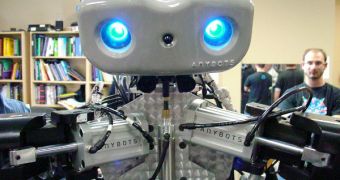Scientists have developed a new method that allows robots to remember relevant pieces of information from the sea of data they collect from the environment, by emulating the way human memory works. Each individual is able to recall the most important things about a certain period or event, but all the useless details are processed subconsciously, and then discarded. Roboticians and computer experts want to be able to replicate the exact same mechanism in the machines, which could thus become more able to answer various situations and challenges that they may face, Technology Review reports.
A team of experts from the Vanderbilt University was behind the new “forgetfulness” algorithm, which replicates humans' ability of weeding out irrelevant pieces of information about the past. “Forgetting is a critical capability when operating in dynamic environments,” VU PhD student Sanford Freedman said. He presented the new software this week in Cambridge, Massachusetts, at the IASTED Robotics and Applications conference. A paper detailing how the algorithm, called ActSimple, works was also published at the meeting.
“A new model of forgetting, named ActSimple, has been developed to increase the ability of robots to wade through the waves of data generated by robotic sensors. Unlike some existing models of human forgetting and robotic systems, the proposed forgetting approach does not select items from memory, but filters the data available to existing algorithms. Through this data screening, traditional robotic algorithms may realize improved performance and increased accuracy. Results from completed experiments suggest ActSimple may not only provide the benefits of forgetting to robotics, but realize increased performance over a number of existing algorithms,” he says on his website.
Two very important aspects of human forgetfulness have been accurately implemented in the program. One of them is the time-based decay, where memory gradually fades away over time, and the other is competition, which occurs when access to memory is “clouded” by another, competing for attention. In the experiments ran with ActSimple, it was proven that, when the robot remembered all of the data it had stored, it yielded the worst overall test results. This counter-intuitively hints at the fact that forgetting pieces of information may actually be good for the human brain, some experts say.

 14 DAY TRIAL //
14 DAY TRIAL //